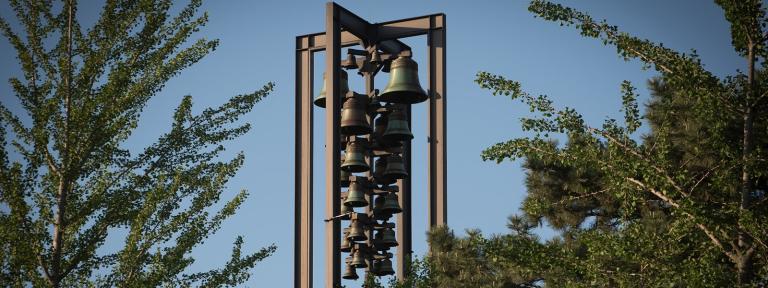
“I was able to be the veteran this year and use things I’ve learned from other competitions.”
A team of five Kettering University students won the annual ‘Innovation Encounter’ competition at Lawrence Tech in October.
The intercollegiate competition, which was sponsored this year by Faurecia North America, rewards inventive problem solving. The Kettering team, which was sponsored by the University’s Innovation to Entrepreneurship Across the University (i2e-AU) initiative (directed by Dr. Massoud Tavakoli, professor of Mechanical Engineering), competed against teams from Ohio Northern, Lawrence Tech, University of Detroit Mercy, Bucknell University and Worcester Polytechnic Institute.
Team members were Andrew Mazzola (ECE), Anna Macherkevich (ME), Hunter Casbeer (ECE), Mihir Mistry (ME) and Vignesh Samban (ME). This was the third time Casbeer has participated in the challenge, something that proved helpful in assembling this year’s team.
Members of Kettering University's team with judges from the Innovation Encounter competition.
“I was able to be the veteran this year and use things I’ve learned from other competitions,” Casbeer said. “From previous competitions, I knew we needed people with a wide range of skills – I knew we needed someone who knew CAD design, someone who knew programming, people who were creative and could come up with ideas quickly and manage time well. Each year in the competition has been a buildup – I’ve learned things from each experience, and this year we were able to put everything together.”
Participants in this year’s competition were tasked with designing a next generation armrest and storage bin for a luxury sedan. They also had to present a manufacturing plan. The judges were actual engineers and product development professionals from Faurecia and Masco Corporation. They were looking for not only good ideas, but potentially implementable ones. Adding to the pressure, after one day of training in an accelerated workshop, the students had just 24 hours to brainstorm, conceptualize, design and finalize their presentations.
“The competition experience was like an engineering and business hackathon, it was so intense,” Samban said. “We learned problem solving and the product development process from a workshop on the first day, and applied what we learned on the second day of competition.”
The team’s focus on the problem statement and the fact that they didn’t veer from what they were tasked with was what was particularly impressive to the judges, who noted that the Kettering team, “took the problem statement to hear, explained their methodology and had the customer in mind.”
Casbeer noted that his experience in previous competitions – including from previous failures – impacted the team’s focus and the technical abilities he sought when assembling the team this year.
“In 2012, we came up with five different ideas, but we didn’t have someone on the team who knew CAD, so we couldn’t show them,” Casbeer said. “Last year, the problem statement was from a customer looking to modify the size of a mattress frame to make shipping more efficient. We tried to do too much – we made a business plan for in-house rather than overseas shipping, we looked at adding an app. They just wanted a new frame design. Our takeaway was that you have to answer the customer’s need. Learning from those failures was a big key to our success this year.”
In addition to Faurecia, the competition was also sponsored by Lawrence Tech and the Kern Entrepreneurial Engineering Network (KEEN). Casbeer, who is the former president of the Kettering Entrepreneur Society and has taken a course in Kettering’s elective Innovation to Entrepreneurship (i2e) Course of Study, noted that the University’s efforts to encourage students to think entrepreneurially help in competitions like this that require creative thinking.
“The more you’re involved in i2e activities, the more it builds your creative muscle,” he said. “You start thinking of different ways to build or do things. Creativity and innovation is being able to connect things you know a lot about to different areas that you wouldn’t think are related – finding out what happens if you combine what you’re familiar with and something you’re not?”
Another added benefit of the competition is that students are able to get direct, specific input and feedback from industry executives working in product development.
“We had some early feedback from the judges and they liked that we were focusing on the architecture of the product,” Casbeer said. “Once we got that feedback, that really fueled our confidence through the rest of the competition. We all felt a real ownership role in the design because everyone made contributions to it. We were so excited about it, that we wanted to go to work for them and see it come to life. That’s what’s great about the competition – students get the experience of working directly with a company and companies get new ideas that they can potentially implement.”